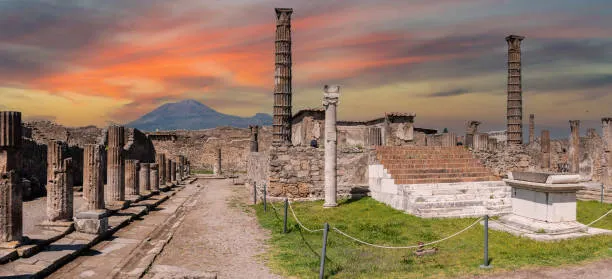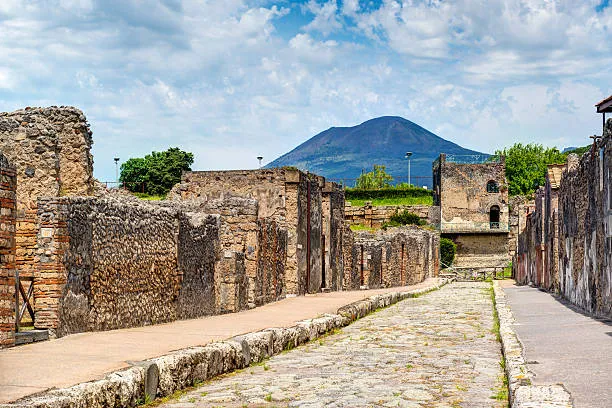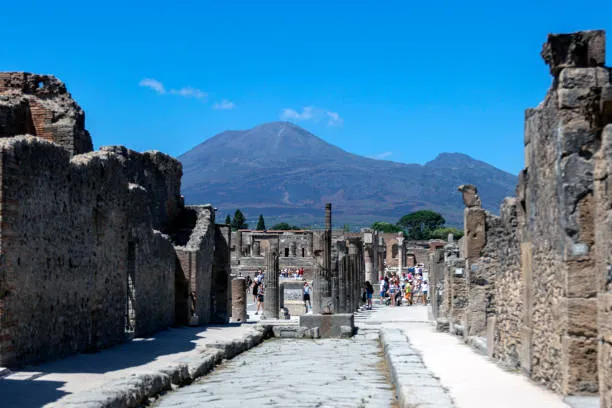
The Roman city of Pompeii, flourishing in the first century AD, was a thriving and affluent center near Naples, characterized by its vibrant culture and progressive society. Overlooking the city was the formidable Mount Vesuvius, a volcano that had been dormant for centuries. Its inactivity led the residents of Pompeii to live without concern, unaware of the brewing danger beneath the surface. Deep within Vesuvius, molten rock had been slowly seeping through the Earth’s crust, only to be trapped by a thick plug of solid rock. This plug acted as a barrier, causing immense pressure to build up over time.

On the fateful morning of August 24th, 79 AD, this pressure reached a critical point. Vesuvius erupted with a force that sent a massive column of molten rock 15 kilometers into the sky. The once-clear day turned to darkness as the hot rock mixed with the atmosphere, blotting out the sun and transforming into a deadly mix of volcanic ash and pumice that began to rain down on Pompeii. Within 24 hours, an astonishing four billion tons of material blanketed the city, burying it under a thick layer of ash.

The eruption’s violence was such that the collision of ash and magma in the air triggered volcanic lightning, adding to the catastrophic scene. As the eruption progressed, the magma chamber beneath the volcano eventually emptied and collapsed, leading to a series of pyroclastic surges—extremely fast-moving avalanches of hot ash, pumice, and volcanic gases. These surges, traveling at speeds of up to 100 kilometers per hour, raced toward Pompeii. The first surge stopped just short of the city, but the toxic gases and ash it brought with it caused many to die from asphyxiation.
Sixteen hours after the initial eruption, the volcanic column supporting the immense cloud of ash and rock finally collapsed. This collapse unleashed a final series of pyroclastic waves that smashed through Pompeii, obliterating everything in their path. The heat was so intense that many victims were instantly encased in layers of ash and pumice, their forms preserved in the positions they held at the moment of death. The entire city and its population were frozen in time, entombed under 25 meters of volcanic rock and ash.
For over 1,500 years, Pompeii remained hidden beneath its volcanic shroud, lost to history. It wasn’t until 1594 that the city was accidentally rediscovered, revealing a remarkably well-preserved snapshot of Roman life, forever encapsulated in ash. The buildings, streets, and even the people of Pompeii, preserved in such detail, offer a haunting and powerful glimpse into a moment in time that was suddenly and violently halted by the wrath of Vesuvius.
*This Blog post is originally written by me on onthenode.com
Check out My post
Also visit my Profile
Pictures are taken from istock
Regrds: Kiara
Have a nice day ❤️